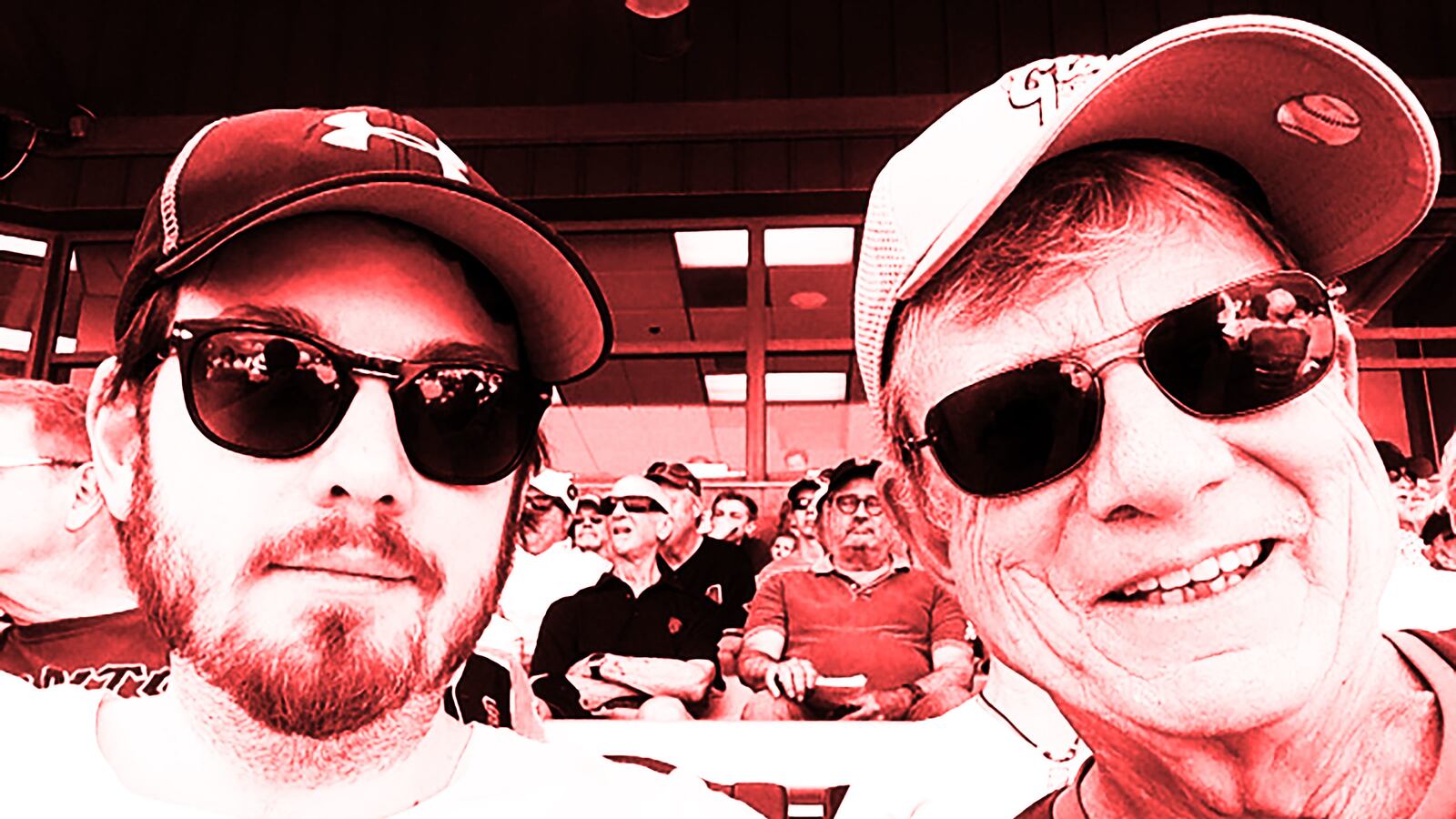Over the years, we’ve witnessed some of New York’s most memorable moments. I was at Shea Stadium in 1969 when the Mets closed out the Baltimore Orioles and won the World Series. Forty years later, Dave watched the Yankees do the same at the Stadium. Together, we tasted the thrill of victory (two-out ninth inning game tying homers by Tino Martinez and Scott Brosius in Games 4 and 5 of the 2001 Series) and the agony of defeat (Josh Beckett of the Marlins shutting out the Yanks in Game 6 of the 2003 series, successive losses to the Red Sox in the ’04 ALCS).
But there’s one baseball experience we’d never tasted: spring training. For me, the first stories in the sports section of the New York Post in the 50’s was a far truer harbinger of Spring than any robin’s song. The datelines themselves—St. Petersburg for the Yankees, Vero Beach for the Dodgers—were a promise that sweeter, warmer days were ahead, even as I trod through the snow and the slush of March in New York. When Dave’s passion for baseball flowered, I promised him that one day we’d make the journey. I’d never kept that promise—until this year.
We chose Arizona for our destination, not Florida. Why? I’ll let Dave explain.
“For an East Coast fan, once you’ve touched down after the four-hour flight, you’re looking at an 80 minute trip as your longest ballpark to ballpark journey—leaving time for not only a proper day night doubleheader, but an actual meal or two in between first pitches.” And there are a lot of ballparks to visit; 15 major league clubs, half the total, now make Arizona their home; they draw some 150,000 visitors every Spring.
“You definitely know when Spring training starts,” my Uber driver told me. “The business really picks up.” Even team most solidly identified with Florida have made the move. The Dodgers stayed in their Vero Beach complex—known as “Dodgertown”—for decades after they’d deserted Brooklyn for Los Angeles. But seven years ago, they migrated to Glendale, Arizona, where they share a $100 million complex with the Chicago White Sox.
Indeed, the level of facilities came as a shock to someone like me, whose Spring Training fantasies involved ramshackle stadiums with wooden seats. At Scottsdale Stadium, where the San Francisco Giants play, the 12,000 seat stadium is worthy of a Triple A ballclub—and with prices to match. The good seats—protected from the sun—are generally available only through secondary markets like Stub Hub, with prices nudging the $200-a-seat mark.
And while the Cleveland Indians’ Goodyear Park is somewhat more modest, the training facility, which they share with the Cincinnati Reds, is decidedly not.
“There was a time when a locker might involve a nail in the wall,” notes Terry Paul of the Cleveland Plain Dealer, who’s been covering the city’s sports for 35 years. Now, the Indians’ complex in Goodyear features state-of-the-art training rooms—separate and unequal, based on whether you’re a major leaguer, Triple A player, or a budding prospect— and a battalion of strength coaches, nutritionists, and a video room where every batting practice swing, bullpen pitch, and ground ball play is available for review. It’s leagues away from the days when, as Paul recalls, “ guys got their meal money for the week, they’d go to McDonald’s and pocket the leftovers.”
“It’s completely changed,” says Cleveland Manager Terry Francona, who remember the way it was when his father Tito played.
“When my dad played, he would run down the back road with big heavy sweat suits on in the winter. I don’t remember him ever hitting. We lived in Pennsylvania, so there were no batting cages, and you get to spring training and you worked your blisters. That has long changed. The guys work in the winter, they come prepared. If my dad had to pass the physical we give our arrivals, he’d have a heart attack.
“There are a lot of times, we tell the guys who play every day , ‘it’s okay not to be quite ready to hit. We have seven weeks here, 600 at bats. Don’t play catch up. Don’t be so tired at the end of the day that your arm hurts.”
For all the changes, there is one constant to the spring training atmosphere that remains: a sense of laid-back charm. The games are played in the daytime, the way God and Alexander Cartwright intended. The pace—no replay challenges—is quicker. And there are no jarring, ear-splitting distractions between every pitch.
“The stadium will not always be THIS LOUD between pitches, my son Dave notes. “You will actually hear the wind rustling the leather and leather meeting ball and the sound of misting jets being activated (happily,| they do not expect you to roast in high double-digit or low triple-digit temperatures.) And if you don’t like your assigned seat location and happen to spot some vacant seats in a choice location, there won’t be any guards protecting the sacred space as there are in the New York ballparks.”
For fans, there’s a special added attraction—access. At Goodyear, only a waist-high chain-link fence separates them from the path from batting practice to clubhouse. Players are happy to stop, sign autographs, pose for selfies, and chat.
That’s why fans like Dave Barany and his girlfriend Carrie Gonzales have traveled from Cleveland to gather autographs and photos. And it’s why fans, like Rob Mihalco have been following the sun from frigid Lake Erie to the warm weather every Spring for decades, from the time the Indians trained in Winter Haven, Florida, to when they first came to their new Arizona home eight years ago.
And it’s why, twenty-five years after my first promise to a nine-year-old boy, the fulfilling of that promise felt so damn good.






